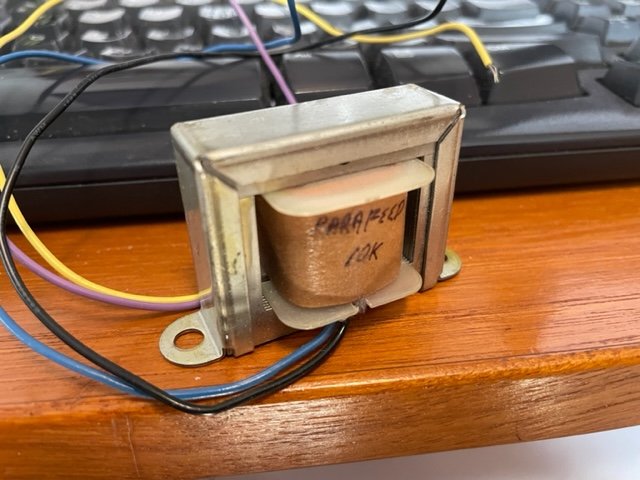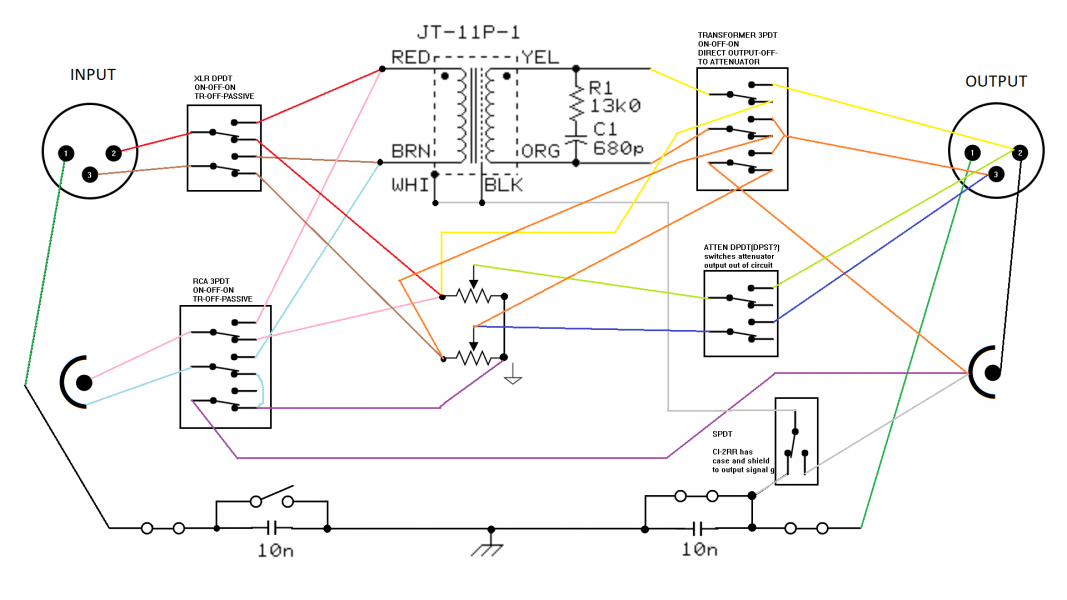And that’s why the cartridge output is not balanced. If you connect only one of the cartridge wires to the phono preamp, you won’t get signal input because the cartridge leads are not referenced to ground. They are floating.
Exactly the opposite! A floating source is a balanced source, if it is inductive in nature. The proof of this is simple: try reversing the leads from the cartridge and see what happens. You get a phase difference and that's all. If it was a single ended source, you'd get an enormous hum. I've been running a balanced line between my tonearm and preamp now for about 35 years, and now you're telling me it doesn't work??

Any phono cartridge based on an inductive principle is a balanced source, with the one exception being the old Decca cartridge, which had only three leads for both channels. Internally it was balanced, but they chose to combine the minus connections, not realizing they would get some signal cancellation just like you do in a three wire headphone connection as opposed to a 4 wire hookup.
Doesn’t the capacitance of XLR cable make a difference? 60 feet has double capacitance of 30 feet. You mean it will not have affect on the sound? I always thought one should choose a long IC between pre and power with small capacitance.
The capacitance of a balanced line isn't double, and I'm sure at some point it probably does make a difference. In the studio, this is controlled by the source and the input it drives both being low impedance (hence the old 600 Ohm standard; these days low impedance inputs in the studio are more like 1KOhms to 2KOhms). If the source is low impedance, in practice that's fine for driving 100 feet no worries even if the input it drives is 100KOhms.
You can't do that with a phono cartridge though because the resonant frequency caused by the inductance of the cartridge in parallel with the capacitance of the tonearm cable goes down as you add more cable length. The lower it gets, the more opportunity it has to mess with your electronics. As it is, LOMC cartridges produce RFI on this account which is why many people use 'loading resistors' to detune that resonance. Its actually for the benefit of the phono section though, not the cartridge. If your phono section was designed with this phenomena in mind (IOW immune to RFI at its input), you won't need the loading resistors.
It has long been known that in PP amplifiers (there a balanced signal is required according to the principle of operation, if it is not present at the input, then it is received specially) even harmonics are mutually compensated. But the odd ones are left behind, and these are dissonant harmonics, they are unpleasant for hearing.
The ear treats the 2nd and 3rd the same, since they are so close to the fundamental. If the circuit is fully balanced, the 3rd will appear (assuming open loop) at a level
less than it might in an SET. Succeeding harmonics then fall off on an exponential curve based on a cubic function (SETs express harmonics on a quadratic function), meaning they fall off at a faster rate than in an SET, and so are easily masked by the 3rd, which is benign.
In PP amplifiers, the odd harmonics are larger than the even harmonics and the monotonicity condition is violated.
This isn't correct, if you are referring to
all PP amps. It can be correct if the PP amp has a single-ended input, combining SE circuits with PP circuits. When this happens, algebraic summing of the quadratic and cubic non-linearities thus expressed results in a prominent 5th (see Norman Crowhurst's writings of 60 years ago). IOW you either go SE all the way or fully differential balanced all the way, if you want that nice fully masked exponential decay of higher ordered harmonics.
This sounds a little bit like my theory about a possible sonic effect of balanced inputs and cables suppressing even ordered harmonic distortion. Ralph says balanced circuitry in components might suppress even ordered harmonic distortion, but not the balanced inputs and cables themselves.
But I am not ready to give up on my theory just yet.
I hadn't thought that the idea that balanced cables were thought to do anything like you describe, but SVS seems to subscribe to the same idea, so maybe that's another myth about balanced line operation that's out there.
Here's something to consider: you can buy single-ended tube microphone preamps that drive balanced lines using an output transformer. Such preamps have schematics that on paper look identical to SET amps- literally scaled down. The transformer used, like this one

works exactly the same way that it does in any SET: so yes, you can have an SET drive a balanced line easily enough, by simply seeing to it that neither connection of the output transformer is tied to ground. So the leap you are taking in your 'theory' is that somehow, by simply making this connection, the SET takes on all the properties of PP?? I had Jack Elliano of Electra Print make this little guy for me for an SET mic preamp. You can see it only has two wires on the primary side and only two on the output side; not enough to be a PP transformer. It's meant for a single 12AU7 or 6CG7 section to drive it and it has a cut core, just like any SET OPT might if the primary side is a plate load for the tube driving it.









